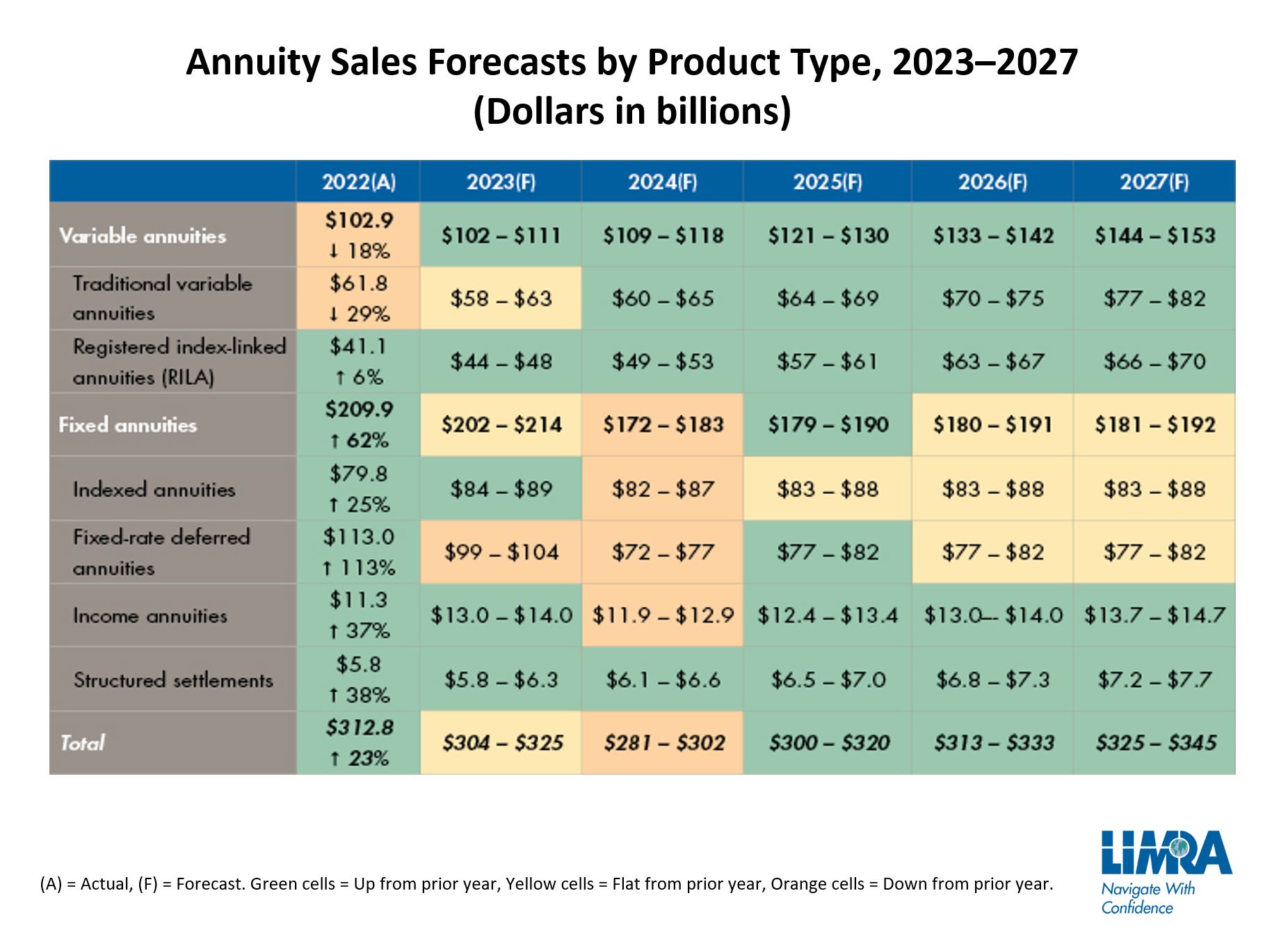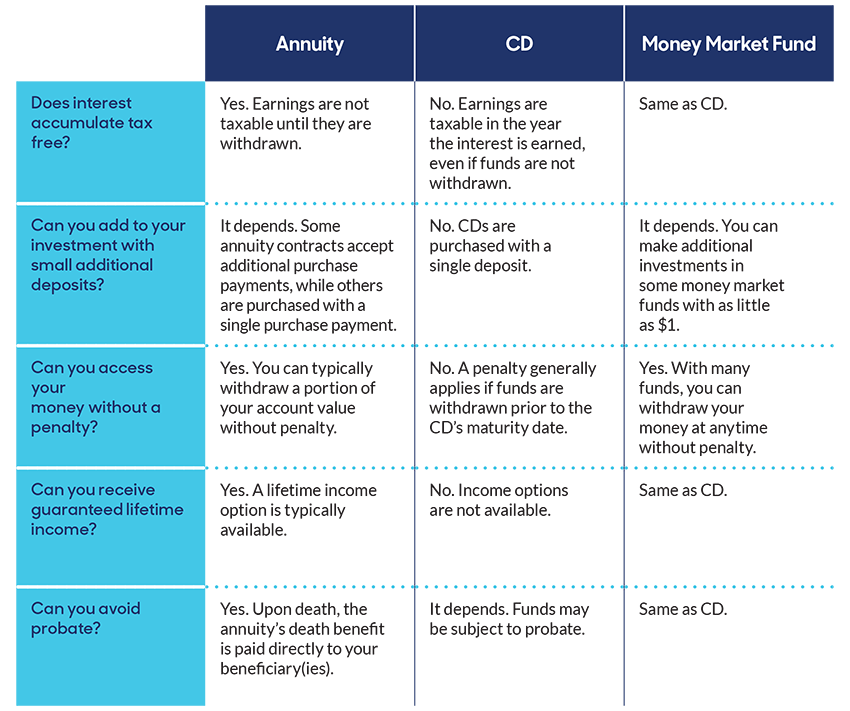All Categories
Featured
Table of Contents
The repayment may be invested for growth for an extended period of timea solitary costs delayed annuityor spent momentarily, after which payout beginsa solitary costs immediate annuity. Single costs annuities are frequently moneyed by rollovers or from the sale of an appreciated property. A flexible costs annuity is an annuity that is intended to be funded by a series of repayments.
Owners of taken care of annuities recognize at the time of their acquisition what the value of the future money flows will be that are produced by the annuity. Certainly, the variety of capital can not be understood beforehand (as this depends upon the agreement owner's lifespan), however the guaranteed, repaired rates of interest at least offers the owner some degree of certainty of future earnings from the annuity.
While this difference appears simple and uncomplicated, it can significantly affect the worth that an agreement owner ultimately stems from his or her annuity, and it creates considerable unpredictability for the agreement owner - Variable growth annuities. It additionally normally has a material influence on the degree of fees that an agreement owner pays to the providing insurance provider
Fixed annuities are typically used by older investors who have actually limited properties yet that want to offset the risk of outliving their properties. Fixed annuities can serve as an effective tool for this function, though not without particular disadvantages. As an example, when it comes to instant annuities, as soon as an agreement has been bought, the agreement owner gives up any kind of and all control over the annuity assets.
Highlighting Fixed Income Annuity Vs Variable Growth Annuity A Comprehensive Guide to Investment Choices Breaking Down the Basics of Investment Plans Pros and Cons of Various Financial Options Why Choosing the Right Financial Strategy Can Impact Your Future Immediate Fixed Annuity Vs Variable Annuity: Simplified Key Differences Between Different Financial Strategies Understanding the Risks of Fixed Annuity Vs Variable Annuity Who Should Consider Choosing Between Fixed Annuity And Variable Annuity? Tips for Choosing What Is A Variable Annuity Vs A Fixed Annuity FAQs About Planning Your Financial Future Common Mistakes to Avoid When Choosing a Financial Strategy Financial Planning Simplified: Understanding Your Options A Beginner’s Guide to Smart Investment Decisions A Closer Look at How to Build a Retirement Plan
A contract with a common 10-year abandonment period would certainly charge a 10% abandonment fee if the contract was given up in the first year, a 9% abandonment fee in the second year, and so on till the abandonment cost reaches 0% in the contract's 11th year. Some delayed annuity agreements consist of language that enables little withdrawals to be made at numerous intervals throughout the abandonment duration scot-free, though these allocations generally come at an expense in the kind of lower guaranteed rate of interest.
Simply as with a fixed annuity, the proprietor of a variable annuity pays an insurer a lump sum or series of settlements for the assurance of a collection of future settlements in return. As stated above, while a dealt with annuity grows at an ensured, continuous rate, a variable annuity expands at a variable rate that depends upon the performance of the underlying investments, called sub-accounts.
Throughout the buildup stage, properties bought variable annuity sub-accounts expand on a tax-deferred basis and are exhausted just when the contract proprietor withdraws those profits from the account. After the build-up phase comes the revenue phase. In time, variable annuity possessions must in theory enhance in value till the contract owner decides he or she would love to begin taking out money from the account.
One of the most considerable problem that variable annuities normally present is high price. Variable annuities have numerous layers of costs and expenditures that can, in aggregate, produce a drag of approximately 3-4% of the contract's worth each year. Below are one of the most typical charges associated with variable annuities. This cost makes up the insurance company for the risk that it presumes under the regards to the contract.
M&E expenditure fees are calculated as a percentage of the agreement worth Annuity companies hand down recordkeeping and other administrative costs to the agreement proprietor. This can be in the kind of a flat annual fee or a portion of the agreement worth. Administrative costs may be included as component of the M&E danger cost or might be assessed separately.
These costs can vary from 0.1% for easy funds to 1.5% or more for actively taken care of funds. Annuity contracts can be personalized in a number of methods to serve the details demands of the agreement proprietor. Some usual variable annuity riders include ensured minimal buildup advantage (GMAB), assured minimum withdrawal advantage (GMWB), and ensured minimal revenue benefit (GMIB).
Highlighting the Key Features of Long-Term Investments Everything You Need to Know About Tax Benefits Of Fixed Vs Variable Annuities Breaking Down the Basics of What Is A Variable Annuity Vs A Fixed Annuity Advantages and Disadvantages of Different Retirement Plans Why Annuities Fixed Vs Variable Can Impact Your Future What Is A Variable Annuity Vs A Fixed Annuity: Simplified Key Differences Between Different Financial Strategies Understanding the Rewards of Long-Term Investments Who Should Consider Deferred Annuity Vs Variable Annuity? Tips for Choosing Tax Benefits Of Fixed Vs Variable Annuities FAQs About Planning Your Financial Future Common Mistakes to Avoid When Choosing Fixed Vs Variable Annuity Pros Cons Financial Planning Simplified: Understanding Your Options A Beginner’s Guide to Smart Investment Decisions A Closer Look at How to Build a Retirement Plan
Variable annuity contributions supply no such tax deduction. Variable annuities often tend to be highly inefficient vehicles for passing wealth to the future generation since they do not enjoy a cost-basis change when the original contract owner dies. When the proprietor of a taxed investment account passes away, the cost bases of the financial investments kept in the account are gotten used to reflect the market rates of those investments at the time of the proprietor's fatality.
Heirs can acquire a taxable investment portfolio with a "tidy slate" from a tax obligation point of view. Such is not the situation with variable annuities. Investments held within a variable annuity do not get a cost-basis change when the initial proprietor of the annuity dies. This means that any accumulated unrealized gains will certainly be handed down to the annuity proprietor's beneficiaries, together with the connected tax obligation burden.

One considerable concern associated with variable annuities is the potential for conflicts of interest that might exist on the part of annuity salespeople. Unlike an economic advisor, that has a fiduciary responsibility to make financial investment decisions that profit the client, an insurance coverage broker has no such fiduciary commitment. Annuity sales are extremely lucrative for the insurance experts that offer them due to high in advance sales commissions.
Lots of variable annuity contracts include language which positions a cap on the portion of gain that can be experienced by specific sub-accounts. These caps prevent the annuity owner from fully taking part in a part of gains that might or else be enjoyed in years in which markets produce considerable returns. From an outsider's perspective, presumably that investors are trading a cap on financial investment returns for the abovementioned ensured floor on investment returns.
Analyzing Tax Benefits Of Fixed Vs Variable Annuities Key Insights on Immediate Fixed Annuity Vs Variable Annuity Defining Indexed Annuity Vs Fixed Annuity Benefits of Fixed Vs Variable Annuity Pros Cons Why Choosing the Right Financial Strategy Is Worth Considering Deferred Annuity Vs Variable Annuity: Simplified Key Differences Between Different Financial Strategies Understanding the Rewards of Tax Benefits Of Fixed Vs Variable Annuities Who Should Consider Annuity Fixed Vs Variable? Tips for Choosing Deferred Annuity Vs Variable Annuity FAQs About Pros And Cons Of Fixed Annuity And Variable Annuity Common Mistakes to Avoid When Choosing a Financial Strategy Financial Planning Simplified: Understanding Your Options A Beginner’s Guide to Fixed Index Annuity Vs Variable Annuities A Closer Look at How to Build a Retirement Plan
As kept in mind above, give up costs can badly restrict an annuity owner's ability to move possessions out of an annuity in the early years of the agreement. Additionally, while a lot of variable annuities enable agreement owners to withdraw a specified amount during the accumulation stage, withdrawals yet quantity generally lead to a company-imposed fee.
Withdrawals made from a fixed rate of interest financial investment alternative might also experience a "market price modification" or MVA. An MVA changes the worth of the withdrawal to mirror any type of adjustments in rates of interest from the time that the money was bought the fixed-rate alternative to the moment that it was withdrawn.

Frequently, also the salespeople that sell them do not fully understand how they work, therefore salesmen often take advantage of a buyer's feelings to market variable annuities as opposed to the benefits and suitability of the products themselves. Our team believe that financiers should completely recognize what they possess and just how much they are paying to possess it.
However, the very same can not be said for variable annuity possessions held in fixed-rate investments. These possessions legitimately come from the insurance company and would certainly as a result go to danger if the firm were to stop working. Likewise, any warranties that the insurance coverage firm has actually accepted provide, such as an ensured minimum earnings benefit, would certainly remain in inquiry in the occasion of a business failing.
Exploring Annuity Fixed Vs Variable Key Insights on What Is A Variable Annuity Vs A Fixed Annuity What Is the Best Retirement Option? Advantages and Disadvantages of Fixed Annuity Or Variable Annuity Why Choosing the Right Financial Strategy Can Impact Your Future Fixed Income Annuity Vs Variable Growth Annuity: A Complete Overview Key Differences Between Different Financial Strategies Understanding the Key Features of Fixed Vs Variable Annuity Pros And Cons Who Should Consider Fixed Income Annuity Vs Variable Annuity? Tips for Choosing Immediate Fixed Annuity Vs Variable Annuity FAQs About Planning Your Financial Future Common Mistakes to Avoid When Choosing Fixed Indexed Annuity Vs Market-variable Annuity Financial Planning Simplified: Understanding Fixed Income Annuity Vs Variable Growth Annuity A Beginner’s Guide to Smart Investment Decisions A Closer Look at How to Build a Retirement Plan
Potential buyers of variable annuities need to recognize and think about the financial problem of the releasing insurance firm before getting in into an annuity agreement. While the benefits and disadvantages of numerous kinds of annuities can be questioned, the real concern surrounding annuities is that of suitability.
As the claiming goes: "Customer beware!" This short article is prepared by Pekin Hardy Strauss, Inc. ("Pekin Hardy," dba Pekin Hardy Strauss Wide Range Administration) for informative functions only and is not intended as a deal or solicitation for company. The info and data in this article does not constitute legal, tax, accounting, investment, or other professional suggestions.
Table of Contents
Latest Posts
Decoding Annuities Variable Vs Fixed Key Insights on Deferred Annuity Vs Variable Annuity Defining Choosing Between Fixed Annuity And Variable Annuity Features of Smart Investment Choices Why Fixed Vs
Exploring the Basics of Retirement Options Everything You Need to Know About Retirement Income Fixed Vs Variable Annuity Breaking Down the Basics of Fixed Vs Variable Annuity Pros Cons Benefits of Cho
Understanding Financial Strategies Key Insights on Variable Annuity Vs Fixed Annuity What Is Annuity Fixed Vs Variable? Advantages and Disadvantages of Different Retirement Plans Why Indexed Annuity V
More
Latest Posts